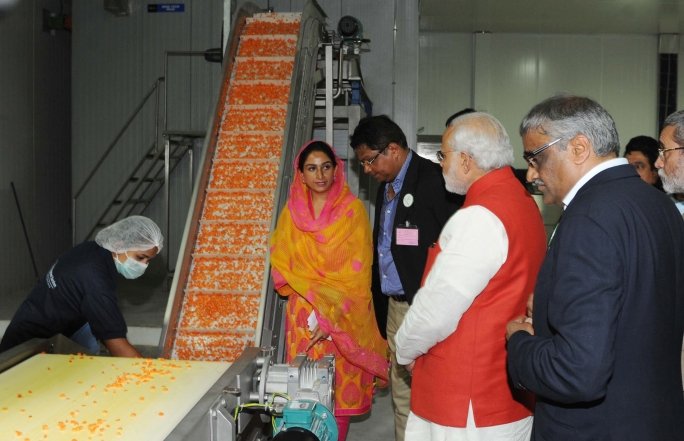Inside BENEO’s new pulse plant: pioneering sustainable protein from faba beans
Food Parks project has seen a backlash over the years and that is mainly because of the land issue. In order to bridge the gap, Ministry of Food Processing Industries has come with revised schemes such as Agro-Marine Processing and Development of Agro-Processing Clusters (Sampada). The ministry has also made a mandate for promoters to either own 10 acres of land or lease it for at least 50 years if they seek for approval.
Interestingly, in 2016, when the scheme was introduced, Sampada intended to make setting up food processing clusters easy for promoters and farmers by offering them among other things the freedom to decide the land size. The scheme was envisioned as an all-encompassing project that brought all the aspects of food processing including earlier schemes like Mega Food Parks and aspects such as forward and backward linkages under one umbrella.
In a recent notification, the ministry of food processing industries (MoFPI) has revised the guidelines for infrastructure development under the Pradhan Mantri Kisan Sampada Yojana.
Further, the revised guidelines say that the applicants need to meet the cutoff marks of at least 60 out of 100, out of which 50 marks have been earmarked for land requirement only under the eligibility criteria.
The guidelines add, “The proposals, meeting the cutoff total marks of at least 60 as per the criteria for assessment in the Annexure-I (which gives details of marks), will be considered eligible subject to fulfillment of other conditions prescribed in the scheme guidelines. The proposals will be selected in order of merit on a monthly basis till the time number of clusters allocated of a state gets exhausted. Further, the proposals will be selected in order of merit of total marks (descending order of total marks) in a particular state.”
MoFPI aims at creating 100 such clusters across the country and under the new guidelines the number could well be extended if the ministry gets good proposals.
The guidelines state, “Based on the agricultural production of states and Union Territories (UTs), state-wise allocation of 100 agro- processing clusters is at Appendix-A. However, in case of lack of suitable proposals or non-receipt of proposals from a state/UT, IMAC may decide to allocate more agro-processing clusters to that state/UT, over and above the allocated clusters as per Appendix-A, in order of merit of score/marks obtained by the eligible proposals.”
However, experts differ on the requirement of land bank. Dr Arpita Mukherjee, professor, Indian Council for Research on International Economic Relations (ICRIER), opined, “Logically, it should not be mandatory to have a land bank to develop food processing clusters. Our study for MoFPI showed that success of food clusters around the world is not necessarily dependent on land size. It depends on location, connectivity, access, etc. Globally due to shortages of land, countries such as Singapore are developing vertical clusters.”
She added, “For example, the JTC Food Hub in Senoka Food Zone is a seven-storied ramp up development comprising 50 modular factory units. Governments of countries such as Singapore provide incentives for clusters that engage in land optimising techniques. Given scarcity of land in India, the country should also move towards land optimising food parks.”

